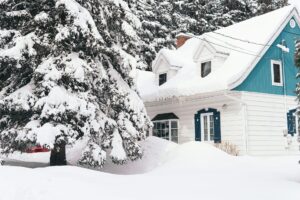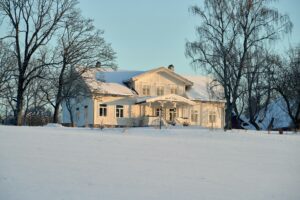Autumn in the Pacific Northwest brings vibrant foliage and cooler temperatures, but it also heightens the risk of water infiltration and weather-related damage. For homeowners in Vancouver, WA, fall is a critical window to proactively fortify roofing systems, siding, windows, and gutters. A well-rounded approach not only maintains the structural integrity of your home, it also enhances energy efficiency and can reduce renovation costs over time.
In what follows, you’ll find a practical “fall home checklist Vancouver” that takes you step by step through each exterior component. By coordinating projects now, before the onset of heavy rainfall, your home can seamlessly transition into the wet season, with minimal risk of leaks or drafts.
Why Fall Maintenance Matters in Vancouver
The Pacific Northwest climate is characterized by damp conditions that can cause persistent wear on a home’s exterior. Vancouver roofing and siding, in particular, endure the stress of constant moisture, making annual inspections essential. Using the mild fall weather to schedule repairs or upgrades sets you up for a smoother, drier winter.
• After a typically dry summer, roofs may have developed cracks or loose shingles.
• Siding expands and contracts in changing temperatures, increasing the chances of moisture intrusion if not properly sealed.
• Falling temperatures reveal any weaknesses in window seals or weatherstripping.
• Gutter systems must handle sudden downpours, preventing water from pooling around foundations.
When all these factors are addressed together, particularly during fall, you tap into seasonal advantages that make home improvement projects more efficient.
Roofing: Assess Early, Repair Promptly
Your roof is your first line of defense against the rain. Even minor weaknesses can evolve into major leaks when the seasons shift. As part of a comprehensive “Vancouver WA exterior maintenance” plan, a systematic roof evaluation each fall helps identify:
- Curling or cracked shingles that expose underlying layers.
- Debris buildup that can trap moisture.
- Missing flashing or sealant around vents, chimneys, and satellite dish connections.
While a brief visual inspection from the ground can work as a preliminary measure, scheduling a professional assessment catches subtle issues. Experts can safely navigate the roof, check for soft spots, and suggest immediate fixes. If repairs are needed, mid-October typically sees moderate weather, creating a natural window for prompt patchwork before the storms intensify.
Siding: Guarding Against Moisture Intrusion
Slanted rain and foggy, wet days can push water behind damaged or aging siding, compromising the structural integrity of your home. Whether you have vinyl, fiber cement, or wood siding, vigilance is key:
• Look for warping, buckling, or swelled panels.
• Inspect joints, especially around windows and doors, for gaps or splits.
• Consider a light power wash to remove algae, moss, or mildew, just be cautious not to force water into seams.
Any siding flaws can allow water intrusion, leading to issues such as mold growth and compromised insulation. By handling siding improvements during the fall, you ensure that Vancouver’s rainy season won’t exacerbate these imperfections. If your siding is nearing the end of its lifespan, see if coordinating a roof or gutter replacement at the same time can optimize scaffold or contractor availability, often reducing both time and expenses.
Windows: Sealing in Comfort
Energy efficiency and indoor comfort rely on well-maintained windows. Over time, weatherstripping deteriorates and frames loosen, creating space for chilly fall drafts. A window check should include:
• Inspecting the caulking around frames.
• Testing the locks to ensure a tight seal.
• Checking for condensation between panes, a sign of failing seals.
On crisp October mornings, a draft near a window can be your first clue that something’s amiss. Replacing worn-out weatherstripping is a quick, cost-effective solution. For older windows with persistent fog or consistent leaking, sometimes a full window upgrade is a better investment. Fall is a great time for window installations, lower humidity aids in proper sealant curing, and you’ll enter the colder months with improved energy efficiency.
Gutters: Preparing for Rainy Deluges
When rain starts to fall in sheets, properly functioning gutters prevent water from running down siding or pooling around your home’s foundation. Gutter maintenance steps include:
- Clearing leaves and debris to maintain water flow.
- Inspecting downspouts to ensure water moves away from the home.
- Checking for sagging or loose sections that might allow overflow or leaks.
In Vancouver, clogged gutters can quickly lead to standing water, increasing the risk of ice dams if temperatures drop. Consider installing gutter guards if your property is surrounded by trees that drop leaves each year. Remember, coordinating roofing or window projects alongside gutter repairs can be more cost-effective. Contractors often bundle tasks when you schedule multiple services, minimizing the hassle of repeated home visits.
Coordinating Exterior Projects for Efficiency
Tackling roof, siding, windows, and gutter maintenance under one umbrella can streamline costs, reduce downtime, and ensure that each system is handled with an understanding of the entire home’s dynamics. When crews already have scaffolding in place for your roof, installing new siding or upgrading windows can be more straightforward. Similarly, your property is set up for safe movement and staging of materials, making it easier to complete multiple tasks before the wet season begins in earnest.
By aligning this work in the fall, you’re taking advantage of the tail end of the drier season. This approach helps projects cure properly, like fresh paint or caulking, and means there’s a lower chance of unplanned weather delays.
DIY vs. Professional Maintenance: A Comparison
Everyone loves a hands-on approach, and there are certainly straightforward tasks you can do yourself. But other exterior tasks carry safety risks or require specialized equipment. The table below offers a brief comparison:
| Task | Complexity | Cost Factors | Risk Factors | Time Requirement |
|---|---|---|---|---|
| Roof Shingle Check | Medium (ladder work) | Minimal for inspection tools | High fall risk, potential hidden damage | 1–2 hours |
| Siding Power Washing | Medium | Renting or buying a power washer | Risk of water forcing behind siding | 3–5 hours (depending on size) |
| Window Weatherstripping | Low | Low (weatherstripping materials) | Minimal, but improper sealing can reduce effectiveness | 1–2 hours per window |
| Gutter Cleaning | Medium | Low for basic tools | Ladder height, potential roof edge hazards | 2–3 hours |
| Professional Assessment | Low (your time) | Moderate to high (depends on scope) | Far lower personal risk | Usually 2-3 hours total |
For tasks like minor gutter cleaning or reapplying window sealant, many homeowners feel confident. However, climbing onto the roof can be significantly more dangerous, especially for multi-story houses. A professional team comes prepared with the right safety gear, insurance, and expertise to complete larger repairs efficiently. Given Vancouver’s wet fall climate, it’s wise to weigh the risks before pulling out a tall ladder or tackling major issues on your own.
Frequently Asked Questions
- What are the top fall maintenance priorities in Vancouver? Roof inspection tops the list, followed by a thorough check of siding and windows for moisture-related damage. Cleaning gutters is also critical since leaves can clog them thoroughly in just a few weeks.
- Is it really cost-effective to coordinate multiple projects in fall? Yes. Performing multiple exterior projects at once can save money on labor, equipment rentals, and staging. When professionals already have scaffolding and ladders set up, it’s simpler to address multiple concerns simultaneously.
- Why is October the recommended time for exterior work? October often strikes a balance between disappearing summer dryness and imminent rain. Temperatures are typically moderate, which allows materials like paint and caulk to cure effectively, and lessens the likelihood of abrupt weather disruptions.
- Should I replace my windows if they’re only slightly drafty? Sometimes adding fresh weatherstripping solves minor draft problems. However, if windows are older with warped frames or persistent fog issues, replacement might be more cost-effective long-term. Enhanced comfort and energy savings often repay the investment.
For more insights on best practices, consult the NFPA’s guide on home safety and the EPA’s weatherization resources.
Timing and Weather Considerations
In Vancouver, late September and early October frequently offer sunny intervals and stable conditions ideal for outdoor work. Roofing materials adhere better when temperatures remain above 50°F, while fresh caulking around windows and siding cures most effectively when not exposed to rain within the first 24 hours.
If you wait too long, you risk cold snaps or sudden storms that can derail projects. Having to pause mid-way through a roof repair or siding installation only prolongs the process, and may invite water-related complications. By planning ahead and scheduling early, you improve your chances of harnessing cooperative weather windows.
Preparing for Long-Term Durability
Exterior maintenance is an ongoing part of homeownership, particularly in areas like Vancouver that face seasonal weather extremes. But a single, well-planned round of repairs and inspections each fall can extend the life of your roof, preserve the condition of your siding, and protect window seals for years to come.
When you approach these tasks in an organized manner, inspecting each component, prioritizing urgent repairs, and deciding which projects to coordinate, you’re effectively investing in the longevity of your home. Over time, the result is fewer unexpected expenses, enhanced curb appeal, and a property that stands up to damp, windy winters with confidence.
Moving Forward with Confidence
Fall maintenance is part art, part science: It’s a thoughtful blend of timing, expertise, and preparedness. By focusing on practical tasks, like cleaning gutters, sealing windows, updating siding, and ensuring your roof has no weak points, you set your home on a path to a stress-free winter.
For many homeowners, it’s the sense of security that truly resonates. With projects completed under favorable conditions and professionals on your side, you’ll have peace of mind knowing that your home is safeguarded from Vancouver’s heavy rains and brisk winds. If you’ve been considering upgrades or simply want to finalize a fall home checklist Vancouver homeowners trust, now is the time to act.Should you need expert guidance, HOMEMASTERS is here to help with Vancouver roofing and siding, window, and gutter services to streamline your to-do list. Careful planning, thoughtful coordination, and the promise of a durable exterior can transform the sometimes-daunting process of home maintenance into an empowering one. And once the work is done, you can settle in comfortably for the colder months, secure in the knowledge that your home is ready to weather whatever winter brings.




